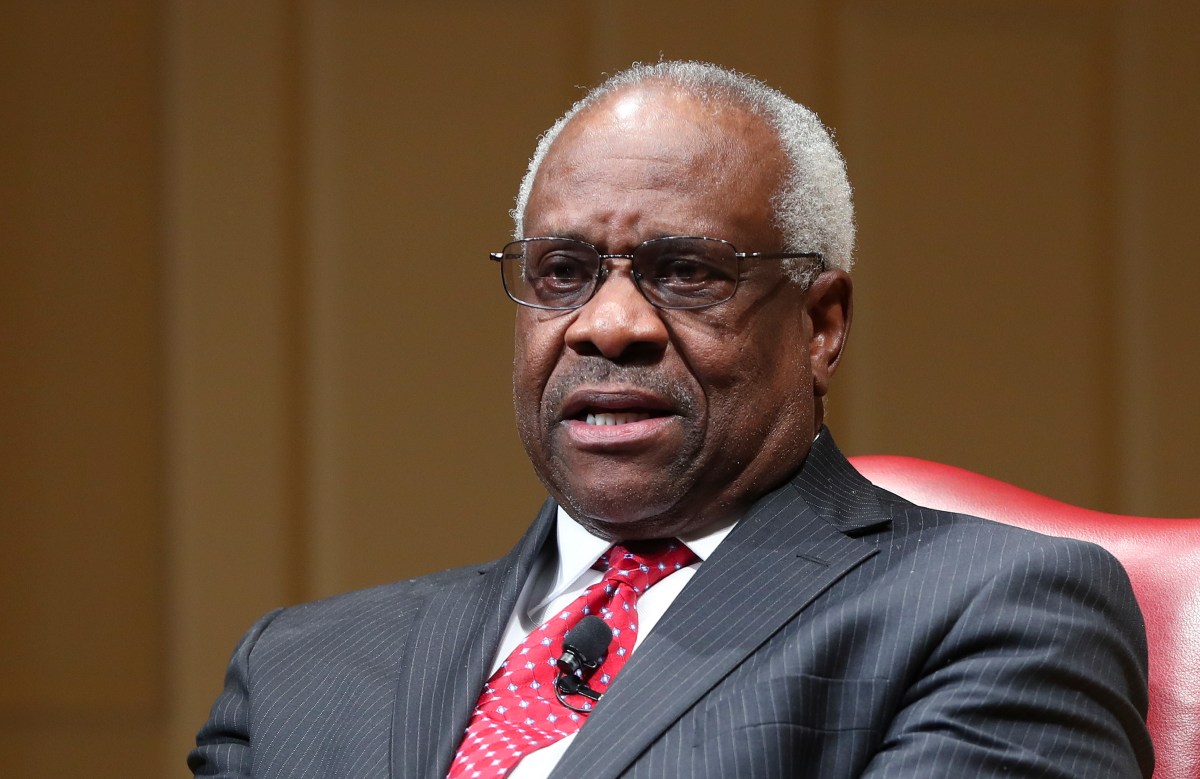Revelations of Justice Clarence Thomas’s extravagant gifts from plutocrats seem to surface almost every week, to the point that some readers may be tempted to roll their eyes and move on to the sports section. That would be a mistake. The latest story of how he acquired his gilded motorcoach and hid it from the public differs from the others—because, in this case, there is simply no excuse for nondisclosure.
When it comes to generating scandals, Thomas is a traditionalist. It’s always the cover-up. His repeated failure to disclose legal but embarrassing events and transactions has besmirched any legacy he might hope to leave. This history of misreporting will be in the first paragraph of his obituary.
The latest concealment relates to his 1999 purchase of a luxury motorcoach financed by a wealthy benefactor. It was an unusual arrangement that ultimately amounted to a substantial gift, perhaps even taxable income, never disclosed on Thomas’s annual reports.
Thomas bought the 40-foot-long Prevost Le Mirage XL Marathon with a $267,230 loan from Anthony Welters, a healthcare entrepreneur he had known since they served together in the Reagan administration. According to documents obtained from Welters by the Senate Finance Committee, the loan’s original term was five years with an arm’s length interest rate of 7.5 percent. The underlying promissory note and security agreement provided that Thomas was to make only annual interest payments for the length of the loan, with the full principal due at maturity. A later addendum extended the loan for another ten years under the same terms. The Senate committee obtained a check from Thomas to Welters for $20,042.23, which would have been the interest due for one year.
It appears, however, that Thomas (and his wife Virginia, who cosigned for the loan) made at most only nine annual interest payments through 2008, and perhaps fewer. Only one canceled check is known to exist. In a handwritten note dated December 21, 2008, Welters informed Thomas that no further payments were necessary because the interest payments had already exceeded the amount of the original loan. (In fact, even nine years of interest payments would have totaled only a little over $180,000, about $87,000 less than the loan amount.)
As the Senate Finance Committee summarized the situation, “Anthony Welters forgave a substantial amount, or even all of the principal balance of his loan to Clarence Thomas, constituting of the forgiveness of approximately $267,230.00 of debt owed by Justice Thomas.”
There are different ways of characterizing the financial benefit to Thomas—as a gift from a friend, as Welters might put it, or, as the Internal Revenue Service regulations would put it, as taxable income. Either way, it should have been included in Thomas’s 2008 disclosure statement.
Withholding required information has been a regular practice of Thomas’s during his long tenure on the Supreme Court. He failed to report 20 years of his wife’s employment by the conservative Heritage Foundation, his decades of lavish vacations and private jet travel hosted by various billionaires, the existence of several bank accounts, and the details of a real estate transaction with Republican donor Harlan Crow, as well as Crow’s payment of tuition for Thomas’s nephew at an expensive private school. Even when correcting his reports, Thomas miscategorized gifts as “reimbursements,” which allowed him to omit their value.
Thomas’s excuses, typically provided only when the omissions were reported in the press, have ranged from dubious to implausible, especially coming from a Supreme Court justice. He has claimed to have misunderstood the plain instructions on the disclosure form or language in the gift regulations and that multiple omissions were “inadvertent.” He asserted that the tuition payment for his nephew was a gift to the student rather than to Thomas himself, although the applicable law required him, as legal guardian, to pay for his ward’s education.
This time, there is no possible excuse. Thomas was obviously aware that he paid less than the full amount of principal and interest on his loan from Welters, as the documentation clearly shows. His attorney insists that “the loan was never forgiven” because “the terms of the agreement were satisfied in full.” That is what lawyers call a distinction without a difference. The changes in the loan terms, no matter how satisfactory to Welters, nonetheless should, by law, have been reported as either income or a gift.
Every additional revelation of Thomas’s unreported financial dealings renews the call for the Supreme Court to adopt an ethics code. Although Justices Elena Kagan and Amy Coney Barrett have announced support for such a code, and several others have indicated their likely approval, it is hard to imagine what difference it would make for Justice Thomas. He has routinely flouted the existing ethics statutes and regulations.
Perhaps the court’s majority should begin by adapting Canon 2 from the Code of Conduct for United States Judges, applicable to the lower federal courts since 1973, as an implicit message to their colleague: “A Judge Should Avoid Impropriety and the Appearance of Impropriety in All Activities”—and we really mean it.



